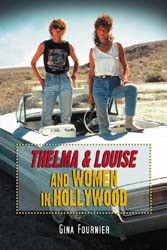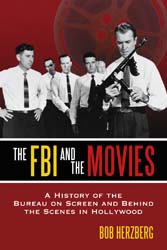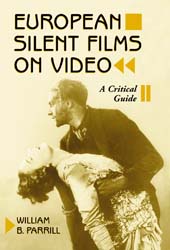 The Presidents on Film
The Presidents on FilmWith the prominence of the U.S. president and the presidency, the executive office and its occupant have naturally found their way into numerous cinematic expressions. Since 1903, presidents have been featured in no less than 407 commercial films. Ranging from respectful, biographical presentations to comic caricatures, the ways in which presidents are depicted on film reflects a great deal about contemporary perception of the office.This volume examines how filmmakers and their public have viewed the presidents and the presidency over the past 100 years. The book presents an all-inclusive list of commercial theatrical films that include an actual American president as a character, excluding documentaries, television productions and fictional characters. At times these roles are minor while in other instances they form one of the main characters of the film. In either case, however, an analysis of these depictions reveals a great deal about the president—and the filmmaker. The main body of the work is devoted to an examination, arranged in chronological order, of each of the 42 men who have served as president. A brief summary of each administration is provided along with a commentary on the overall nature of films in which the featured president appeared. Each relevant film is then discussed with the credits, plot summary, description of the presidential appearance and, when possible, an assessment of the presidential portrayal included. Photographs from notable films are also provided
The entertainment industry is all too much a man’s world, with Hollywood at its macho center. Thelma & Louise made film history with a female screenwriter, two female leads and a controversial, female-empowered storyline. The film is well worth studying for its impact on Hollywood and, in a broader sense, its reflection of women’s role in society.This book examines the cultural impact of Thelma & Louise, not only upon its release in 1991 but throughout the nearly fifteen years since. The book begins with a look at the role of women in media and the underrepresentation of women in the film industry, on and off screen. Next comes a thorough examination of Thelma & Louise’s public reception: the controversy it generated, the reviews it received, and the many ways it is referenced in popular culture. Case studies from newspapers across the United States, focusing on reviews and op-ed pieces in The Salt Lake Tribune, The Washington Post, The Boston Herald, The Atlanta Journal and Constitution and others, show how the film’s reception differed from region to region. The final chapter provides current female employment statistics for the film industry and offers insight into the present role of women in film.
 This study examines the major works of contemporary American television and film screenwriter Joss Whedon. The authors argue that these works are part of an existentialist tradition that stretches back from the French atheistic existentialist Jean-Paul Sartre, through the Danish Christian existentialist Søren Kierkegaard, to the Russian novelist and existentialist Fyodor Dostoevsky. Whedon and Dostoevsky, for example, seem preoccupied with the problem of evil and human freedom. Both argue that in each and every one of us “a demon lies hidden.” Whedon personifies these demons and has them wandering about and causing havoc. Dostoevsky treats the subject only slightly more seriously.Chapters cover such topics as Russian existentialism and vampire slayage; moral choices; ethics; Faith and bad faith; constructing reality through existential choice; some limitations of science and technology; love and self-sacrifice; love, witchcraft, and vengeance; soul mates and moral responsibility; love and moral choice; forms of freedom; and Whedon as moral philosopher.
This study examines the major works of contemporary American television and film screenwriter Joss Whedon. The authors argue that these works are part of an existentialist tradition that stretches back from the French atheistic existentialist Jean-Paul Sartre, through the Danish Christian existentialist Søren Kierkegaard, to the Russian novelist and existentialist Fyodor Dostoevsky. Whedon and Dostoevsky, for example, seem preoccupied with the problem of evil and human freedom. Both argue that in each and every one of us “a demon lies hidden.” Whedon personifies these demons and has them wandering about and causing havoc. Dostoevsky treats the subject only slightly more seriously.Chapters cover such topics as Russian existentialism and vampire slayage; moral choices; ethics; Faith and bad faith; constructing reality through existential choice; some limitations of science and technology; love and self-sacrifice; love, witchcraft, and vengeance; soul mates and moral responsibility; love and moral choice; forms of freedom; and Whedon as moral philosopher. 






No comments:
Post a Comment